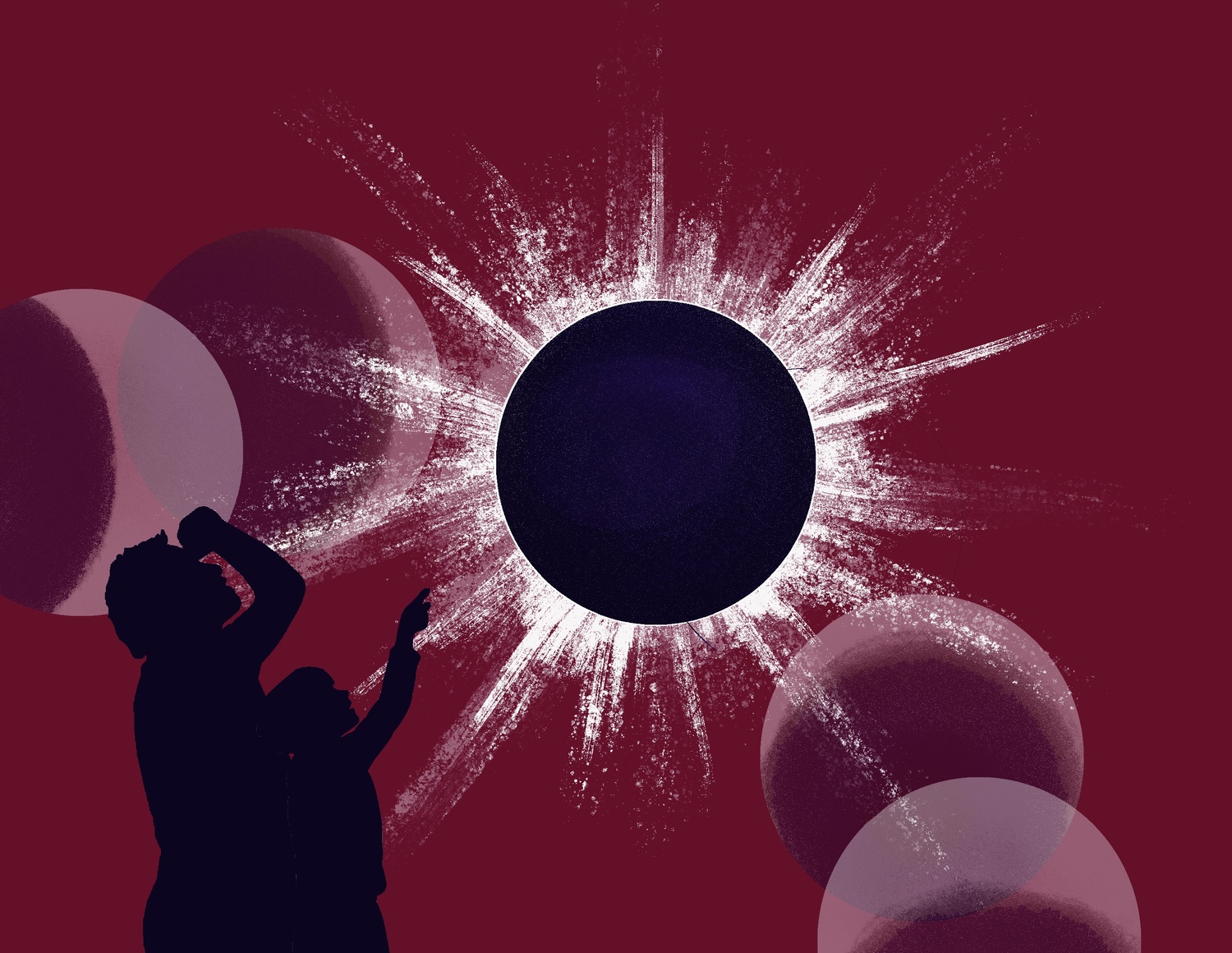
News
Progressive Labor Party Organizes Solidarity March With Harvard Yard Encampment

News
Encampment Protesters Briefly Raise 3 Palestinian Flags Over Harvard Yard

News
Mayor Wu Cancels Harvard Event After Affinity Groups Withdraw Over Emerson Encampment Police Response

News
Harvard Yard To Remain Indefinitely Closed Amid Encampment

News
HUPD Chief Says Harvard Yard Encampment is Peaceful, Defends Students’ Right to Protest
A History of Solar Eclipses in Art

On April 8, people from all over the country flocked to a narrow belt of land, running from Texas to Maine, to catch a glimpse of the total solar eclipse. Emerging from the Mexican border around midday and passing into Canada in the afternoon, the eclipse mesmerized countless viewers across the US.
For many, it was the viewers’ first time seeing a total solar eclipse. This strange event spurred varying emotions, from feelings of shock and awe to disappointment and boredom. This begs the question: throughout history, how have people reacted to the solar eclipse?
For centuries, popular culture has been fascinated by this exceedingly rare event. The many feelings engendered by the eclipse have produced much folklore and folk traditions over the course of history. In Vietnamese folklore, for example, it is believed that a solar eclipse occurs when an enormous toad devours the sun.
Even after astronomy equipped humanity with the tools to understand and predict the eclipse, the eclipse’s hold on humanity’s collective wonder has not relented. For centuries, artists have capitalized on this phenomenon to produce works that linger in the popular imagination.
Astronomical phenomena particularly inspired the universalists of the Renaissance. With Giotto di Bondone replacing the Star of Bethlehem with his image of Halley’s comet in the early Italian Renaissance in “The Adoration of the Magi” (c. 1320), the Renaissance tore down walls that separated art and science.
The solar eclipse itself has been a recurring feature in the Christian iconography of the Renaissance; Raphael was inspired by the eclipse as a metaphor for deception in “Isaac and Rebecca Spied upon by Abimelech” (1518-19). In this Fresco, Raphael illustrates a scene from the Bible where Rebecca and Isaac express their love for each other under the cover of an eclipse. Matthias Grünewald — a German Renaissance painter — famously depicted the crucifixion of Christ in the midst of a solar eclipse in “The Small Crucifixion” (c. 1511/1520). Possibly inspired by the solar eclipse of 1502, Grünewald’s distorted figures and the heightened emotions of mysticism redefined the Western imagination of the solar eclipse as being intertwined with the non-human.
Peter Paul Rubens — the famous Flemish Baroque painter — was himself inspired by the symbolism of the Renaissance. Three of his paintings that were produced over the course of ten years, “Elevation of the Cross” (1610), “Christ on the Cross” (1610), and “Christ on the Cross between the Two Thieves” (1619-20) depict the crucifixion of Christ and an eclipse in the background.
More recently, artists found the solar eclipse to be a powerful tool for the abstractions of 20th-century painting. Diego Rivera’s cubist painting “Portrait of Ramón Gómez de la Serna” (1915) features a solar eclipse in the eye of the poet — a homage to the poet’s personal interest in the eclipse. The solar corona exuding from the eye of Gomez may also symbolize the poet’s subdued imagination, the subject’s grip on his pen suggests he is on the process of writing, and the dark town in the background further suggests the author’s nocturnality.
The Russian symbolist Nicholas Roerich in “Prince Igor Campaign” (1942) examines the themes of war under the shadow of a solar eclipse. Pop artist Roy Lichtenstein was primarily interested in the geometry of the eclipse, illustrating many phases of the eclipse in a playful spread with his works “Eclipse of the Sun” (1975) and “Eclipse of the Sun II” (1975).
The solar eclipse also remains popular in the 21st century. In Kentaro Miura’s critically acclaimed manga, “Berserk,” the eclipse is used as a symbol of doom and catastrophe, partly inspired by the works of Grünewald and Ruben. David Bowie’s final album “Blackstar” (2016) is also riddled with references to the eclipse. For example, the music video for its titular track features imagery of the skeleton of an astronaut — possibly a metaphor for the death of Bowie’s previous persona “Major Tom,” floating toward a solar eclipse. “Blackstar” is David Bowie’s confrontation with death; only two days after the album was released, Bowie succumbed to liver cancer.
Art serves as a vehicle for the many feelings spurred by the exceedingly rare and fascinating phenomenon that is a solar eclipse. Rubens evokes feelings of doom, whereas Lichtenstein evokes a playful curiosity. As the memory of the eclipse on April 8 fades from our imagination, it’s important to remember that its impact resonates across different centuries of media and cultures.
—Staff writer Wonjae Suh can be reached at wonjae.suh@thecrimson.com.
Want to keep up with breaking news? Subscribe to our email newsletter.
